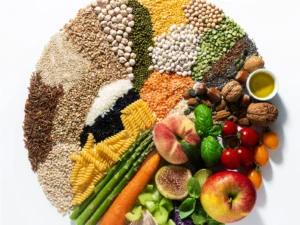THE IMPACT OF ANTIBIOTICS ON YOUR GUT MICROBIOME AND HOW TO RESTORE IT
The human gut microbiome comprises trillions of microorganisms that influence many aspects of human health such as digestion, the immune system, and mental health. Therefore, the composition of the gut microbiome needs to be maintained to avoid recurrent gastrointestinal problems as well as long-term health problems. For this, detailed knowledge of the factors affecting your gut microbial community is mandatory.
Certain major factors responsible for altering your gut microbiome are diet, sleep, stress, mental health, and the use of antibiotics. Antibiotics are prescribed by a health professional to treat a disease or infection. Other than antibiotics specific to some particular disease, there are broad-spectrum antibiotics too. These drugs inhibit the growth of multiple pathogenic bacteria and so, it increases the risk of destroying the good gut bacteria. Consequently, an imbalance in the gut flora will be created, termed as dysbiosis.
In totality, antibiotics reduce microbial diversity, resulting in shifts in metabolism, increasing the susceptibility of the gut to colonization, and triggering bacterial antibiotic resistance. As per research conducted, the antibiotics have the potential to decimate your gut flora down to one-tenth of its previous level i.e. a 90% reduction. The antibiotic worst for the gut microbiome is Amoxicillin combined with clavulanic acid.
EFFECTS OF ANTIBIOTICS ON GUT MICROBIOME
REDUCED DIVERSITY
Antibiotics result in dysbiosis amongst the various species that naturally comprise your gut microbiome. For instance, by decreasing the good gut bacteria, antibiotics lead to the overgrowth of pathobionts (the opportunistic microbes that emerge as a result of perturbations in healthy gut flora). As the antibiotic-targeted bacteria diminish, the antibiotic-resistant bacteria multiply in their place. Hence, the total microbial load may increase even after reduced diversity. For instance, in a study of patients treated with beta-lactams for 7 days, the fecal samples contained twice the microbial load than before.
ANTIBIOTIC RESISTANCE
Antibiotic resistance is the capacity of a species of bacteria to survive against a particular antibiotic that will otherwise inhibit or kill other bacteria of the same species. As older antibiotics lose effectiveness due to the resistance produced, newer drugs are to be used which are more expensive and not available readily. Nowadays, it has become a public health concern throughout the globe as it is a burden on countries with a variety of infectious diseases. Antibiotic resistance accounts for about 35,000 deaths in the US alone each year. Henceforth, the overuse of antibiotics has to be controlled as it is the primary driver of antibiotic resistance.
ANTIBIOTIC INDUCED DIARRHEA
Under normal conditions, the intestinal epithelium wall is maintained by a number of mechanisms including a thick mucus layer. The introduction of antibiotics eliminates certain sets of microbial species, thereafter, causing thinning of the mucus layer and damaging the intestinal wall. This will further lead to the successful invasion of harmful pathogens and trigger episodes of antibiotic-induced diarrhea. However, this condition is mild and self-limiting i.e. lasting only a few days. As per studies, some strains of probiotics are found to be useful for its prevention among adults and children.
LONG-TERM EFFECTS IN INFANTS
Antibiotics are commonly prescribed drugs to infants and children. However, its frequent use has been associated with delayed gut microbiome development or dysbiosis causing negative outcomes in later life. In a study, infants who have received anti-anaerobic antibiotics in the first year of life, have been found to encounter irritable bowel syndrome and Crohn’s disease more likely as they grow older. Asthma and obesity are also typically developed in those who were frequently exposed to macrolide antibiotics in the first two years of life.
WAYS TO RESTORE DYSBIOSIS CAUSED BY ANTIBIOTIC USE
Antibiotics are important to treat many infections as they not only stop the infection but prevent it from spreading also. However, taking antibiotics for only one week can change the makeup of the gut microbiome for up to one year. Antibiotic overuse may result in liver damage also. Although the good news is that the recovery of the gut microbiome is self-driven it may take some time. So, you should eat some specific foods during and after the course of antibiotics to support your digestion and reduce the side effects.
PROBIOTICS AND FERMENTED FOODS

A number of studies have shown that taking probiotics or live healthy bacteria along with antibiotics, has reduced the risk of antibiotic-induced diarrhea up to 50%. Probiotics particularly Lactobacilli and Saccharomyces are more effective in preventing these side effects. However, being the bacteria themselves, probiotics can also be killed by the antibiotics consumed, so there has to be a gap of a few hours between the two. Taking probiotics after completing the course of antibiotics will also assist to restore the gut microbiome to its original state.
Fermented foods produced by the action of microbes also treat gut dysbiosis. These foods contain a number of healthy bacteria such as Lactobacilli. Examples of such foods are yogurt, cheese, sauerkraut, kombucha, kimchi, and fermented soybean milk which will cultivate healthy bacteria in your gut. You can take these foods during and after you take antibiotics, if you choose to do so.
PREBIOTICS AND FIBER-RICH FOODS
Prebiotics help you have healthy bacteria and also promote their growth. Not only do high-fibrous foods have prebiotics, but other foods also contain prebiotics. For instance, red wine and cocoa contain antioxidant polyphenols that have beneficial prebiotic effects on the gut microbiota.

Fibrous foods are also beneficial as they again contain prebiotics that passes through your digestive tract undigested and are later digested by the gut bacteria, stimulating their growth. Some high-fiber foods are whole grains, nuts, seeds, beans, lentils, berries, peas, bananas, broccoli, and artichokes. Other than raising the number of good bacteria, these foods reduce the growth of harmful bacteria also. However, fibrous foods must be taken only after the course of antibiotics has stopped. This is because dietary fiber slows down the rate of metabolism and will therefore delay the absorption of medicines.
FOODS TO AVOID
Both grapefruit and foods rich in calcium are to be avoided while taking antibiotics as they can hamper proper absorption of the drug. To explain, a common enzyme, cytochrome P450 is used for the breakdown of grapefruit and many medications. So, taking your antibiotic with this fruit as a whole or as a juice will prevent the body from absorbing the drug properly. Similarly, foods supplementing calcium also reduce the absorption of various antibiotics.
CONCLUSION
As you know the phrase, “anything in excess is bad.” So, despite controlling bacterial infections, overuse of antibiotics can trigger many side effects by disrupting the gut microbiome balance. This dysbiosis results in some severe symptoms like diarrhea and liver disease which need to be controlled. Taking probiotics, prebiotics, fermented and high-fiber foods will help you reestablish this imbalance. So, eat plenty of these foods and replace the fluid loss if you are suffering from antibiotic-induced diarrhea.
Download the JoyScore app for a functional and healthy way of living.
Download on the Appstore
Get it on Google Play



